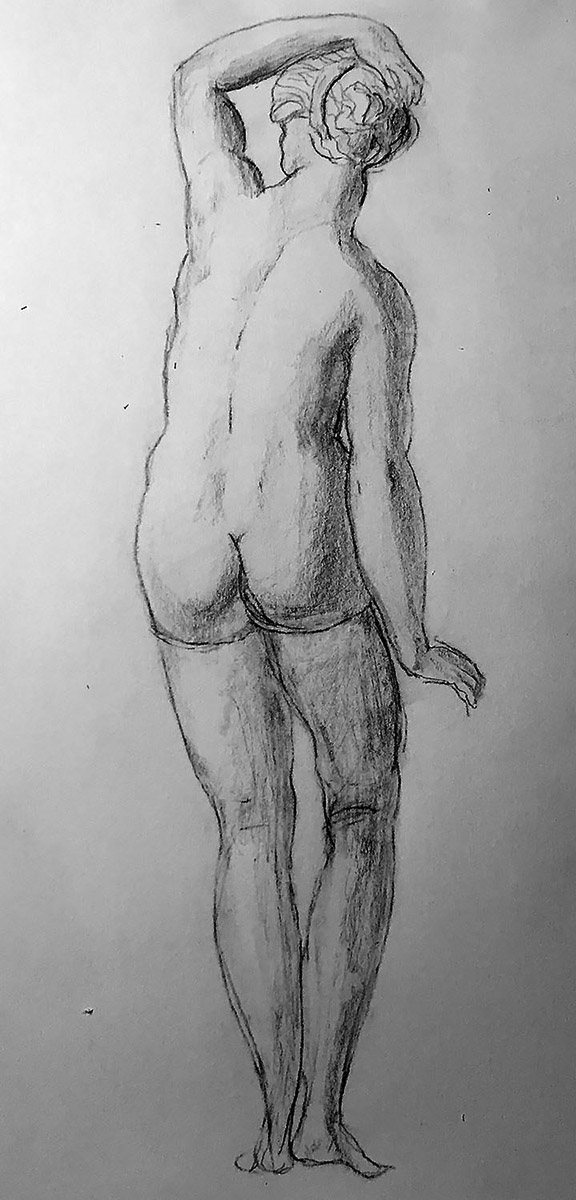
The above drawing is a copy of a work by the Italian artist Agnolo Bronzino. He is usually known by just Bronzino. Because, how many well known artists have the last name of Bronzino? Maybe 12 or 20. So it is not too confusing just to call him Bronzino. According to my research, the original was done in the 16th century. Which is seems rather vague. Bronzino lived between 1503 – 1572 so saying the drawing was done in the 16th century is a safe bet. Like many Italian Renaissance works, it was done in black chalk. I do not care for the scratchy-ness of chalk, so I did mine in pencil. A regular number 2 pencil and a darker one. Maybe a 4B or 6B. The number is for the darkness of the graphite and the letter “B” means soft. An “H” would signify a hard graphite. So to help you remember: H for Hard and B for… never mind. Bronzino’s drawing is actually a copy of a sculpture done by another 16th century Renaissance artist, Bartolommeo Bandinelli. The sculpture is of Cleopatra.
“I do not care for the scratchy-ness of chalk.”
So let’s sum up what we have covered so far. I copied a Bronzino drawing that was copied from a Bandinelli sculpture. Bartolommeo Bandinelli was a “Florentine Mannerist” and was greatly influenced by Donatello. Bandelli became a much celebrated sculptor until he was overshadowed by Michelangelo. Agnolo Bronzino was influenced by Jacopo da Pontormo, whom I talked about in previous posts. Bronzino and Pontormo also worked together on the decorations for two churches in Florence, Italy. As opposed to the city Florence in Kentucky or the ten other cities in America named Florence. Bronzino borrowed Pontormo’s expressive mannerist style and then created a his own clean linear style. His art was also influenced somewhat by Michelangelo as well as the later works of Raphael.
